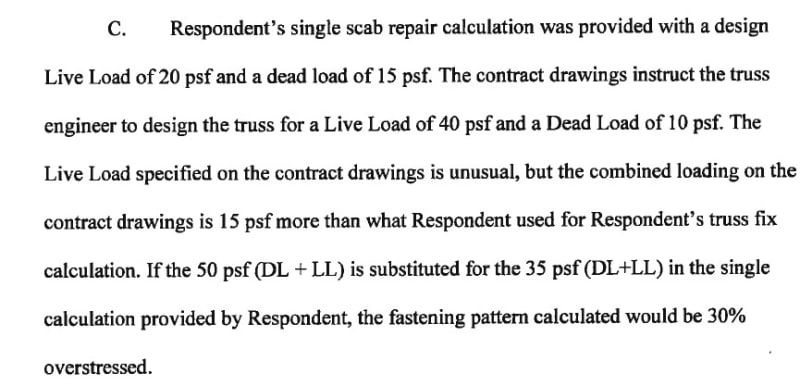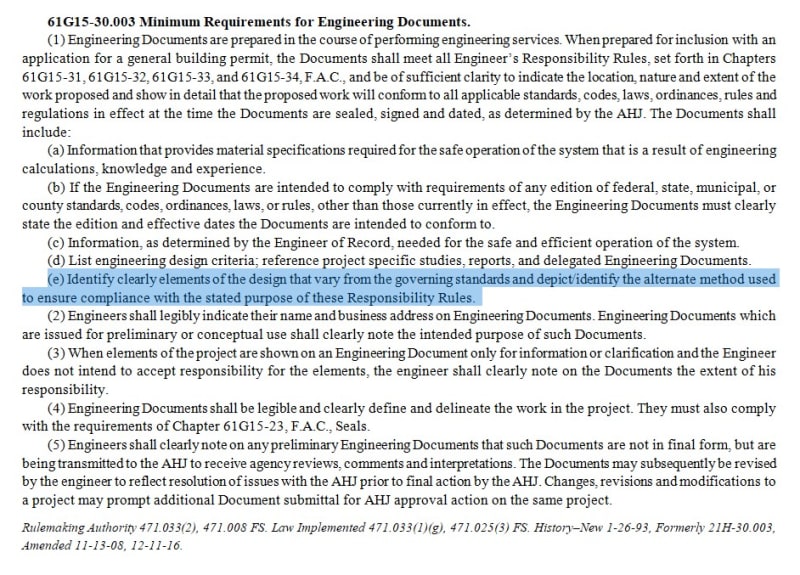Overstressed is a fail in the design standard. Regardless of how far over. In the most literal sense.
If you go beyond 1.0, (in Florida) you're expected to clearly disclose that in your design submission. I mention this not because it's a Florida project, I mention this because designing a building where one element is overstressed per code makes that area more likely to fail. We are supposed to hold paramount life-safety. Anything less than full disclosure of "engineering point shaving" is ethically dodgy.
Source: FBPE website,
Geach disciplinary action, April 30, 2024.
Editorial side note: The truss design engineer is the person who should almost always be doing truss repair designs and issuing sealed repair drawings, especially when it's a new truss and the truss design engineer is readily identifiable. They have the software and the intricacies of the original design, (eccentricities on any joints) and the "homefield advantage". Same concept applies to open web steel joists.
This particular one has a 30% overstress, so obviously that's "too far" for their taste. Just how far over is "too far"? Time will tell. Maybe.
"Failure to comply with the procedures set forth in the Responsibility Rules as adopted by the Board of
Professional Engineers shall be considered as non-compliance with this section unless the deviation or
departures therefrom are justified by the specific circumstances of the project in question and the sound
professional judgment of the professional engineer."
"(8) A professional engineer shall not be negligent in the practice of engineering while performing duties as a
special inspector. Negligence is herein defined as the failure by a professional engineer to utilize due care in
performing in an engineering capacity or failing to have due regard for acceptable standards of engineering and
special inspection principles. Failure to comply with the procedures set forth in the Responsibility Rules for
Professional Engineers Providing Threshold Building Inspection, as adopted by the Board of Professional
Engineers, shall be considered non-compliance with this section unless the deviation or departures therefrom
are justified by the specific circumstances of the project in question and the sound professional judgment of the
engineer."
Source: Florida Board of Professional Engineer's Web site,
61G15, F.A.C As of August 10, 2018, accessed Jun 30, 2024
61G15-30.001 Purpose.
The Board has adopted these responsibility rules pursuant to Section 471.033(2), F.S., to safeguard the life,
health, property and welfare of the public by promoting proper conduct in the practice of engineering and due
care and regard for acceptable engineering principles and standards. The Board considers that professional
engineers may avoid disciplinary actions by observing the procedures set forth herein. Failure to comply with
these rules may be considered as noncompliance with subsection 61G15-19.001(4), F.A.C., unless the deviation
or departure therefrom is justified by the specific circumstances of the project in question.
Now, have I found anything that is that specific, anywhere? NO. Why? Because disciplinary actions (the only thing most of us have access to) don't go into the nuts and bolts and identify things in that detail.
Here's what I have for you - (and many of the Florida disciplinary actions involve that deviations element), read for yourself. There are usually other issues, but the deviations element comes up fairly often.
Church collapsed twice during construction, engineer had no calculations whatsoever (from my read of it), and eccentricity on a footing was not considered, creating significant overstress on the footing. Masonry was over stressed, and roof-wall detailing for shear transfer from roof diaphragm to shear wall was missing.
Source: FBPE,
Haug disciplinary action, December 14, 2022.
Roof-wall detailing for shear transfer from roof diaphragm to shear wall was missing. Incorrect parapet height, missing calculations for some masonry elements, etc.
Source: FBPE web site,
Borujerdi disciplinary action, December 13, 2023.
There are also a number of OSHA reports involving building collapses by Mohammad Ayub that discuss structural engineering in detail and various "overstress" calculations. You can follow the breadcrumbs to the original reports from the Structure Magazine article.
Structural Collapses During Construction, 1990-2008 Lessons learned, Ayub, December 2010.
Many of these involve poor construction techniques and inadequate curing/shoring, but many of the full-on collapses had significant engineering mistakes that contributed to the collapse (
Harbour Cay, collapsed during construction in 1981, springs to mind, as does that 2007 Jacksonville, FL, Parking garage collapse during construction, (
Berkman Plaza II) and the
FIU pedestrian bridge in 2018...). One might consider, if the engineering design had been better, would the goofy construction technique have "limped through" construction without a fatal collapse? Would the construction errors have permanently damaged the structure to the extent it would have collapsed later on when it approached design loading conditions? If the construction technique had been better (longer curing, longer shoring and reshore "loiter time") produced "strong enough for the moment" and lead to a failure (due partly or mostly due to poor engineering) let the structure "limp through" construction to an eventual collapse much later in time when the loads finally approached the design load in the "perfect" location (
Station Square, Burnaby BC collapse during the store's grand opening, springs to mind there).




